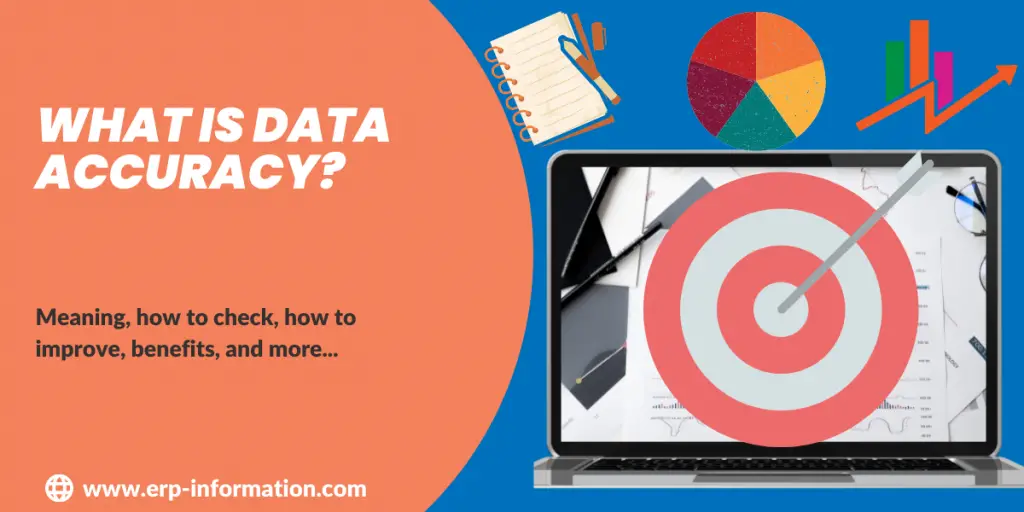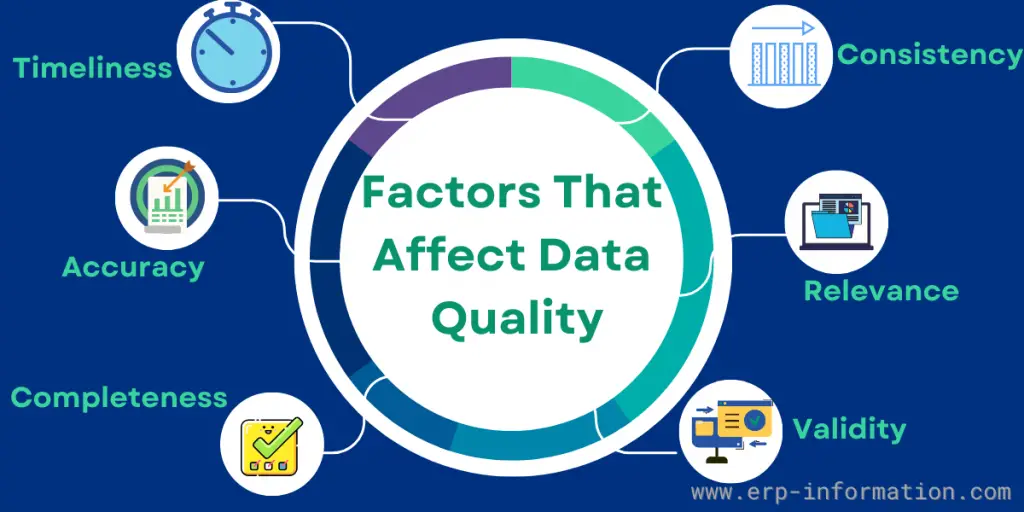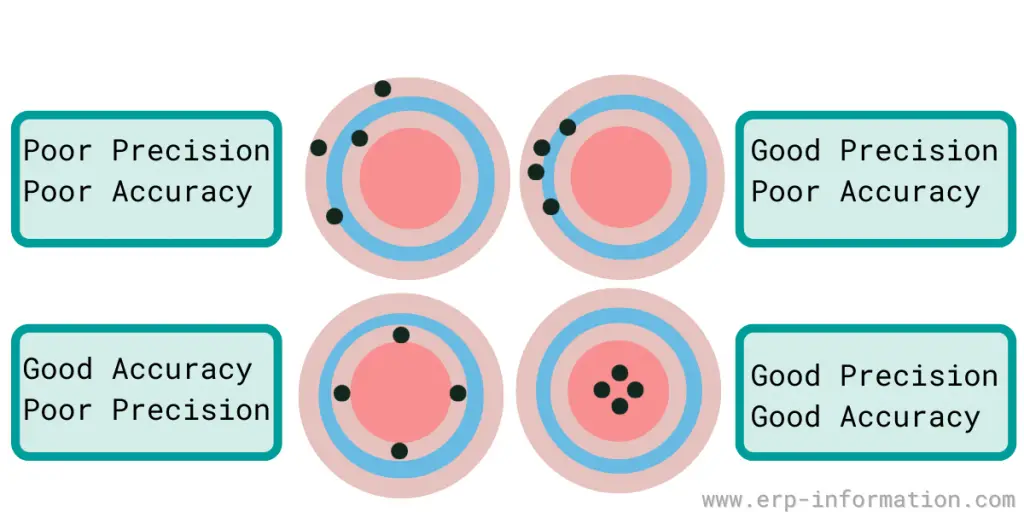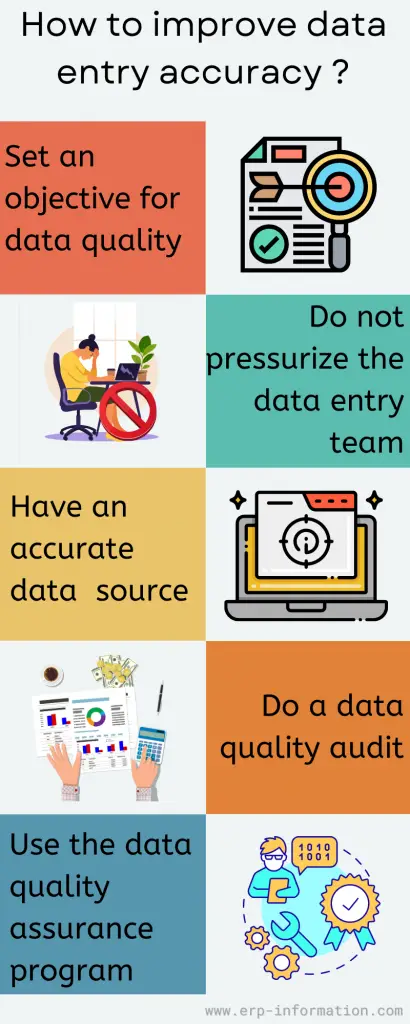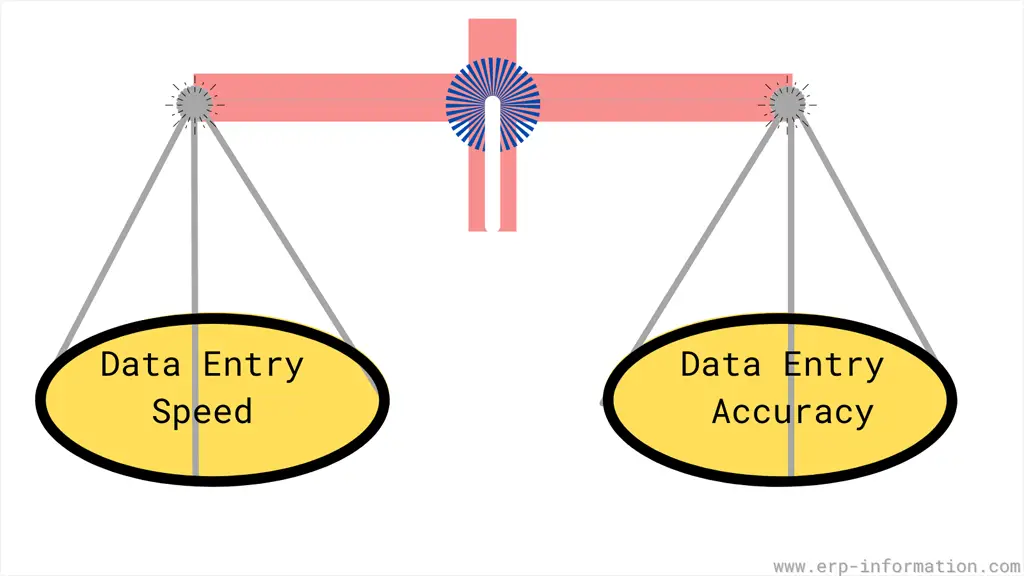Data accuracy is critical for businesses that rely on data-driven decision-making. Without accurate data, companies can make suboptimal decisions that cost them time and money.
The accuracy of information is like the compass guiding a ship on a vast sea. Data accuracy to the precision and correctness of the data a company collects, stores, and uses in its everyday operations. It’s the assurance that the information is free from errors, inconsistencies, or inaccuracies.
Therefore, it is a critical metric that businesses should track to ensure they make the best possible decisions.
This blog post will explore data accuracy, why it’s essential, why data inaccuracy happens, and how businesses can improve their data entry accuracy. Stay tuned for more!
Data accuracy meaning
Data accuracy is the most critical aspect of data quality. It ensures that your company’s business processes are based on reliable and appropriate information, leading to better decision-making capabilities in all areas, including planning, forecasting, budgeting intelligence & more!
A company’s planning, forecasting, budgeting, business intelligence, and all such activities are based on data quality. Accuracy, consistency, timeliness, relevance, validity, and completeness are important data quality metrics.
If the data is irrelevant or incorrect, it can disrupt the entire working system of the business.
Data can never be 100% accurate, but it can be more or less accurate depending on how close it is to reality. The closer that data sticks to reality, the higher its accuracy.
In other words, data accuracy refers to the degree to which data reflects what happened in real life during a specific period.
There are two factors related to data that need to be taken care of,
- The data entered must be of the correct value.
- It must be correctly presented consistently by the expected data standards of the business and its models.
Data inaccuracy
Data inaccuracy is defined as “incorrect or imprecise data.” It can be caused by human error, incorrect assumptions, poorly calibrated equipment, or bad luck.
Whatever the cause, inaccurate data can lead to wrong decisions being made, which can have serious consequences. So next time you’re staring at a screen full of numbers, take a closer look – you might find an inaccuracy that needs to be corrected.
Related article: Data Accuracy Vs Data Integrity
Causes of data inaccuracy
There are many causes for inaccurate data. The following are the main causes.
1. Manual data entry
Data entry is one of the most common causes of data inaccuracy. When information is entered manually, there is always the potential for errors. Likewise, even the most careful and detail-oriented person can make mistakes when transcribing data.
That is why it’s crucial to have systems to check for errors, such as spell checkers and data validation rules. In addition, the market is flooded with tools to reduce the chances of such errors.
2. Lack of data standardization
Another common cause of data inaccuracy is the lack of data standardization. This occurs when different departments or groups within an organization use other systems or formats for storing and tracking data.
For example, one department might use all uppercase letters while another uses all lowercase letters. As a result, comparing and analyzing data from different sources can be challenging.
Another example,
EU database and other countries follow the DD/MM/YY format to write the date. But the US database follows MM/DD/YY format to write the date.
Consider the date 11/12/2020. When it is converted to content, there will be no accuracy. Therefore, it isn’t easy to decide whether it is 11th December or 12th November.
3. Duplicate records
Duplicate records cause data inaccuracy by creating inconsistencies and errors. For example, if a customer’s contact information is entered twice, updates might not reflect in both records, leading to confusion and inefficiencies, such as redundant communications.
Implementing deduplication tools and processes is crucial to identify and eliminate duplicate records, ensuring each piece of information is stored accurately and only once.
4. Inaccurate data sources
Inaccurate data sources compromise data accuracy. If the initial data source is flawed, any derived data will also be unreliable.
For example, outdated market research can lead to ineffective sales strategies. Verifying and regularly auditing data sources is crucial to ensure their credibility. Using trusted, verified data sources ensures reliable information for decision-making.
5. Incomplete and inconsistent data
Incomplete and inconsistent data are major causes of data inaccuracy. Missing information, like a customer’s email address, hampers communication.
Discrepancies in data formatting, such as “CA” vs. “California,” make merging and analyzing data difficult. Ensuring consistent data entry and implementing validation rules can reduce these issues.
6. Lack of data accessibility regulation
Lack of data accessibility regulation leads to data inaccuracy by allowing unauthorized changes and breaches. Without clear guidelines, unrestricted access by multiple employees can cause inconsistencies.
Implementing strict regulations, including role-based access controls, audit logs, and regular training, ensures only authorized personnel modify data, maintaining accuracy and protecting sensitive information.
7. Data decay
Finally, data accuracy can also be degraded over time due to what is known as “data decay.” This happens when information becomes outdated or irrelevant due to changes in the real-world system it represents.
For example, any links stored in a database will become obsolete and inaccurate if a website changes its URL. Data decay can also occur when data is no longer used or accessed regularly, causing it to become stale.
Over time, a firm’s existing data can become redundant and lead to data decay, such as the employees’ details, such as addresses or phone numbers.
Hence, the firm must ensure that it has a rigorous data team that is very dynamic and keeps a close tab on data accuracy, enhancing its overall growth and performance.
Impact of data inaccuracy on business
Lost revenue
Data inaccuracies can lead to incorrect insights and poor business decisions, resulting in lost sales and missed opportunities. For instance, inaccurate inventory data might lead to stockouts or overstock, both of which can negatively affect revenue.
Compliance failure
Maintaining accurate data is crucial for regulatory compliance. Inaccurate data can lead to non-compliance with industry regulations, resulting in hefty fines, legal penalties, and increased scrutiny from regulatory bodies.
Resource and time wastage
Correcting data inaccuracies consumes valuable time and resources. Employees may spend considerable time verifying and correcting data, diverting their focus from more productive tasks and strategic initiatives.
Damage to reputation
Persistently unreliable data can harm a company’s reputation. Customers and partners may lose confidence in the company’s ability to provide accurate information and services, resulting in decreased customer loyalty and potential loss of business.
How do you check the accuracy of data?
It is crucial to check the accuracy of data. Here questions may arise on how to check the accuracy of data. Here are two tips to check your data accuracy.
Repetitively analyze data
Analyze data from different people. For example, using an Excel sheet for data entry is not easy to do a repeated data analysis because it integrates the data. Hence it is better to use high-level languages like Python, SAS, etc.
Check the data with another source
Compare the present data with another source. Sometimes it is impossible to do. However, it is the best process to check the data accuracy if possible.
How do you improve data entry accuracy?
It is crucial to do accuracy verification in data entry. Here are the tips to improve data entry accuracy.
- The company needs to set an objective for data quality. Then, the organization’s top management must solve the fundamental problems troubling their data accuracy. Also, it has to set realistic goals for the data entry team.
- Do not pressure the data entry team. If the data entry team is under pressure, there will be a chance of data entry errors.
- To improve the quality of data, have an accurate data source.
- From time to time, do a data quality audit to find prevalent issues like duplicate, incomplete information, etc.
- The company can use the Data Quality Assurance Program to ensure that the data collected from various sources are correct and relevant. This implementation will help the firm to record valuable data and keep it.
What are the skills that an employee should have for data entry?
Balancing data entry speed with data accuracy is a crucial skill for employees. Speed is essential for meeting deadlines and keeping up with the rapid flow of information in the digital age. However, it should never come at the expense of data accuracy.
Inaccurate data can lead to costly errors, customer dissatisfaction, and a damaged reputation. To strike the right balance, employees should aim for efficient data entry while implementing quality control measures, using tools, and continuously improving their processes.
You know that the data entry team members play an essential role in having accurate data. Here are a few crucial skills that the members should have. You need to consider both hard skills and soft skills.
Good concentration power
Members should have a high concentration while entering the data. We know that the entry person should do that work daily and continuously.
The team Member is a person, not a machine, and has many emotions. So there will be a chance of dropping the focus, leading to inaccurate data. Hence select a person who can avoid distractions during data entry.
Trustworthy character
Members must be reliable. Because many organizations lose their client because of the data stolen, when that person is unreliable, they could easily steal your organization’s critical information.
Hence while fulfilling the people for data entry, check their background thoroughly and ensure they have a trustworthy character.
Experienced with needed software
The member should have the skill to operate the required software. For example, they have to work with many software programs and spreadsheet programs like Excel.
The other programs they generally use are database software, CRM software, and word processors.
So, the candidate should know all the above software and knowledge of computer hardware.
Good typing speed
It is crucial to consider the quantity and quality of the data. Hence the person should have a good typing speed with data accuracy.
You can compromise with speed but can not compromise with precision.
Good communal skill
The data entry person will not work independently. Instead, they work with the team. The data will be distributed to the team members to enter or encode within a specified time.
In the case of outsourcing, the amount of data encoded and entered will highly affect the service provider’s revenue.
So the data entry team member should regularly communicate with the other team members to ensure that the work is done.
Benefits of accurate and reliable data
Here, we are listing the importance of data accuracy
- Helps to make a better decision: When data quality and accuracy are high, the organization’s users get better results. It also increases the confidence level of workers.
- Increases efficiency: With the help of actual output, a company can improve its decision-making ability and increase its efficiency.
- Saves money and time: Data accuracy helps prevent wasting money on unprofitable methods, such as sending mail to the wrong address.
- Improves reputation: Good data quality will positively impact your brand productivity, efficiency, and reliability, which improves your brand reputation.
- Increases productivity: Accurate data allows employees to do the work quickly and efficiently by avoiding finding and fixing data errors. Hence employees focus on their target.
- Improves marketing: Good quality data helps you to market your products or services to the right customers, and also, you can also engage customers with your brand, which improves your sales.
- Improves customer satisfaction: Accurate information about your customers helps your marketing team deliver the products and services at the right time that satisfies your customers.
FAQs
What is data accuracy?
Data accuracy means data without error that can be used as an authentic source of information to make critical business decisions.
Data accuracy is a measurement that measures “how close the estimate of a parameter from sample data is to its true value.”
Why is data accuracy important?
Data accuracy is important because inaccurate data leads to faulty predictions. If the predicted outcomes are wrong, this leads to wasted time, money, and resources.
Accurate data increases confidence to make better decisions, enhances productivity, efficiency & marketing, and helps reduce costs.
How do you ensure accuracy in your data entry?
To ensure accuracy in data entry, the most effective approach is to incorporate a combination of key practices. This includes the implementation of data cleansing procedures, utilizing standard data entry formats, and the establishment of consistent data entry protocols.
The data cleansing process entails a thorough review and necessary updates to eliminate duplicates, incomplete entries, or any inaccuracies within the dataset. By regularly cleaning the data, you significantly reduce the chances of errors creeping into your records.
Utilizing standard data entry formats is another critical step. Standardization is key to preventing errors originating from inconsistent data entry practices, such as typos, misspellings, or improper formatting. A uniform format ensures that data is entered consistently and is easier to manage and analyze.
Implementation of consistent data entry protocols plays a crucial role. Clear and standardized procedures for data entry ensure that all employees follow the same guidelines and best practices.
By combining these practices, you can establish a robust framework for maintaining data accuracy throughout your organization.
Conclusion
Data accuracy is essential for many reasons. For example, suppose data inaccuracies are found in the results of an experiment. It may lead to false conclusions about the effectiveness or safety of a new drug that could harm people who use it.
The more accurate your data set is (with few errors), the better you understand your findings and decisions. We believe this blog was beneficial for you!
